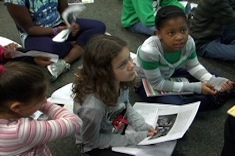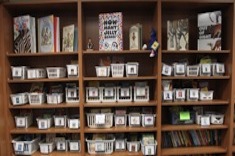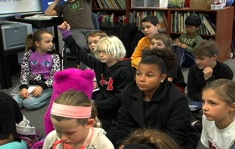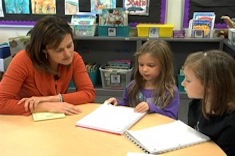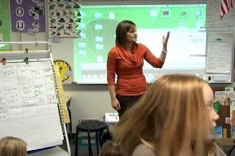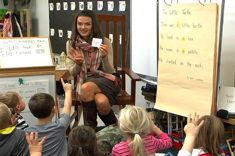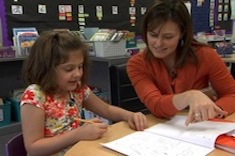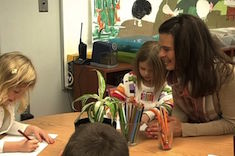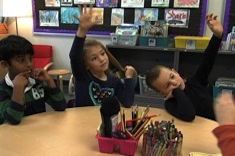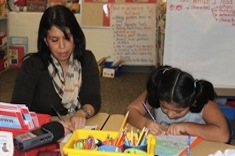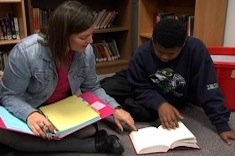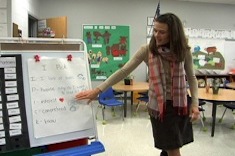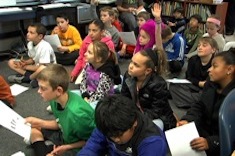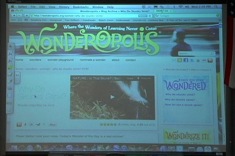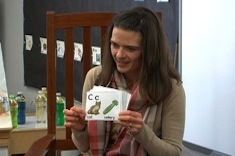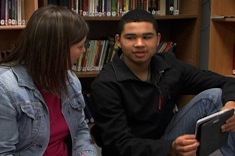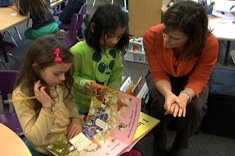Videos
Here is where you’ll find all the latest videos from our contributors. These videos are all captured in classrooms with crews using multiple cameras during regularly scheduled reading and writing workshops.
Latest Content
Owl Research: Whole Class Explanation of Marking Up Text
Students are given a nonfiction text to mark up during a close reading with a partner in this video from Andrea Smith’s fourth-grade classroom.
Conferring in 4th Grade: The Dilemma of Multiple Novels
Melissa Styger confers with a fourth-grade student who is reading two novels simultaneously, and shares her criteria for determining when it’s appropriate for students to read multiple texts.
Fourth Grade Writing Workshop Minilesson on Focusing
Franki Sibberson shares some tips and strategies with her fourth graders from the web for focusing and organizing their writing.
Building from Strengths: Conferring with Mia
Sean Moore confers with second grader Mia, gently encouraging her to work from her strengths by writing about what she knows well.
Notebooks, Goals, and Writing About Characters in First Grade
Katie DiCesare confers with a group of first graders about their writing notebooks, goals, and drafts about the characters they are studying during reading workshop.
Transition Tool: “Come On Over”
This video is a quick take from Katie DiCesare’s first-grade classroom, showing how she uses the tune “Come On Over” as a transition tool.
First Grade Read Aloud: Sergio Saves the Game
Katie DiCesare reads aloud Sergio Saves the Day to her first graders as part of a unit on understanding literary characters.
Whole Group Writing Share
Franki Sibberson’s fourth graders use the whole-class writing share time to discuss writing series they are working on (including blog interviews and book reviews), with an eye toward collaborating with classmates.
Adding to a Word Wall in Kindergarten
Mandy Robek introduces a new word to her kindergartners for their word wall.
Conferring with Ben
Franki Sibberson confers with Ben, a fourth-grade writer trying to figure out the best audience for his writing when technology presents many options.
Decoding and Meaning: Conferring in 4th Grade
Tony Keefer confers with Amanda, a fourth grader who comprehends texts well, but struggles at times with fluency, decoding, and book selection.
Conferring with Pierce
Franki Sibberson demonstrates how much ground can be covered in a three-minute conference with a student. She helps fourth grader Pierce think through the audience for his writing, how to add visuals to blog posts, and enlists him to teach others new skills as he acquires them.
First Grade Conference: Beginnings and Endings in Nonfiction
Katie DiCesare helps first grader Ava craft beginnings and endings for her nonfiction writing.
Teaching Syllable Breaks in Kindergarten
In kindergarten, table groups are a natural and informal way to help groups of students learn new skills through eavesdropping. In this short video from Mandy Robek's kindergarten class, Mandy targets the same skill of defining syllables during individual conferences at the table so that the learning is reinforced for all.
Nonfiction Reading Group in First Grade
Katie DiCesare brings together a group of her first-grade students who are reading nonfiction, helping them to expand the ways they share what they are learning with classmates.
Assessment to Grouping: Fifth-Grade Group on Character Traits
Karen Terlecky meets with two fifth graders who both share the same need identified on a recent formative assessment, inferring character traits.
Rehearsing Informational Writing: Conferring with Jocelyn
Stella Villalba confers with first grader Jocelyn about the information text she is writing about bunnies. Jocelyn is an English language learner, and this conference demonstrates the value of oral rehearsal for young ELL writers.
Exploring Rick Riordan Books in an 8th Grade Conference
In this video from Katie Baydo-Reed’s 8th grade classroom, Katie confers a student about his favorite Rick Riordan books and his plans for future reading.
The Lunch Lady and Gender in Reading
Franki Sibberson has her students read a blog post about books written for boys and girls, which begins a fascinating discussion with the class about gender in reading choices.
Guidance and Choice in a Fifth-Grade Conference
Karen Terlecky confers with fifth grader Jillian the day after she has selected two books Jillian might enjoy reading during workshop.
Kindergarten I-Pick Minilesson
It’s never too early to help students learn to make wise choices for independent reading. Mandy Robek reviews the I-Pick strategy for choosing appropriate books with her kindergarten students.
Every Picture Tells a Story
Max Brand describes how he uses images to build reading and writing skills among his kindergartners.
Teacher-as-Writing-Model Minilesson in Fourth Grade
Beth Lawson models her process as a writer for her fourth-grade students, describing her emotions as well as creating a draft.
Poetry and Fluency Minilesson in Second Grade
Sean Moore uses the poem “The Busy Ant” for partner work and discussion of fluency and vocabulary with his second graders.
Science Challenge
Franki Sibberson’s fourth-grade students share results from the weekly science challenge.
Getting More from Wonderopolis
Franki Sibberson uses Wonderopolis with her 4th grade students, helping them learn to research and dig more deeply at the site.
Letter Practice Transition in Kindergarten
Mandy Robek “warms up” her kindergartners brains for literacy work with a simple one-minute alphabet activity.
Transitioning to an E-Book Reader in Eighth Grade
Katie Baydo-Reed works with Mike, an eighth grader who is using an ebook reader for the first time.
Shared Reading to Explore Writer’s Craft in First Grade
Katie DiCesare’s first graders reread a favorite text in pairs to work on noticing the details of writer’s craft.
Goldilocks and the Three Bears: Reading and Community in Kindergarten
Mandy Robek leads her kindergartners in a shared reading and performance of the classic tale Goldilocks and the Three Bears.
Browse Content By
Type
Category
- Assessment Tools
- Big Fresh Archives
- Booklists
- Choice Numeracy
- Classroom Design
- Common Core
- Community Building
- Conferring
- Content Literacy
- Digital Literacy
- English Language Learners
- Equity
- Family Relations
- Free Samples
- Guiding Groups
- Leadership
- Literacy Coaches
- Mentor Texts
- Minilessons
- New Teacher Mentors
- Podcasts
- Poetry
- Quote Collections
- Reading Strategies
- Self Care
- Struggling and Striving Learners
- Talking and Listening
- Teacher Study Groups
- Teaching Reading
- Teaching Writing
- Word Study and Vocabulary
Author
- Melissa Quimby
- Nawal Qarooni
- Gwen Blumberg
- Julie Cox
- The Lead Learners
- Hannah Tills
- Josie Stewart
- Ruth Metcalfe
- Mallory Messenger
- Becca Burk
- Jodie Bailey
- Vivian Chen
- Mary Brower
- Tiffany Abbott Fuller
- Stephanie Affinito
- Ruth Ayres
- Leigh Anne Eck
- Heather Fisher
- Shari Frost
- Julie Johnson
- Suzy Kaback
- Gigi McAllister
- Shirl McPhillips
- Melanie Meehan
- Cathy Mere
- Debbie Miller
- Tara Barnett and Kate Mills
- Tammy Mulligan
- Dana Murphy
- Bitsy Parks
- David Pittman
- Brenda Power
- Heather Rader
- Matt Renwick
- Mandy Robek
- Christy Rush-Levine
- Gretchen Schroeder
- Jen Schwanke
- Brian Sepe
- Katherine Sokolowski
- Stella Villalba
- Jennifer Vincent
Grade Level
Choice Literacy Membership
Articles
Get full access to all Choice Literacy article content
Videos
Get full access to all Choice Literacy video content
Courses
Access Choice Literacy course curriculum and training

